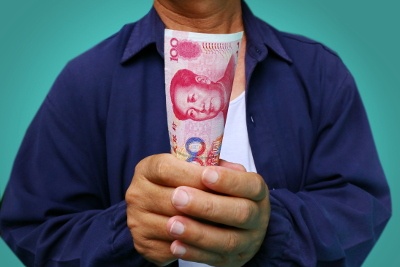Each Sunday, we publish a list of top articles and other content related to manufacturing in areas like quality control, product development, supply chain management, sourcing, auditing and law.
1. Wireless power in manufacturing
I’m not going to lie to you – I’m pretty excited about wireless electricity. We already benefit greatly from wireless internet, but imagine how convenient life would become if you could use electricity without cables. There’s more to this technology than just convenience, though. There’s real applicability for businesses, including manufacturers.
A good primer on wireless electricity at work is the TED talk given by Eric Giler. You can watch it below:
One area where wireless electricity can benefit manufacturers is in combination with sensors. Right now, many sensors require a connection to the power grid with a cable. Other sensors might run on stored energy, which will eventually run out and require recharging the device.
Wireless electricity can eliminate the burdens imposed by cables and rechargeable batteries. Additionally, sensors can reach places that might’ve otherwise been inconvenient to monitor. Using this technology, you’ll also be able to easily monitor power consumption for any connected devices.
The author of this featured article believes that within a decade, it will be possible for factories to run on 90 percent wireless power. Do you agree with this claim? Let us know in the comments section below.
To read more about what wireless power can do for manufacturing, check out the full article in the link below:
The Impact of Wireless Power on Manufacturing – Doug Stovall, Manufacturing.net
2. Exporting more through importing more
To export more, you should import more. While that may sound counterintuitive, according to this featured article, importing actually helps with a country’s export efforts.
The logic is something like this: when domestic manufacturers are able to buy foreign inputs to make their products more cheaply, they benefit. With fewer obstacles to getting affordable inputs, companies can be more competitive with their final product. Of course, this benefit becomes nonexistent if governments impose protectionist trade barriers like tariffs and import quotas.
Considering political reasons or those related to national security, it’s important to mention that the logic above isn’t always perfect. Chinese steel, for instance, is subsidized by the government, and doesn’t entirely obey the market principles of supply and demand. The extra government help might be seen by some as unfair “dumping”. Importing steel might also be seen as a detriment to national defense.
But this article references how for every steelworker in the U.S., 60 other workers in separate industries could benefit from cheaper steel. Higher tariffs could hurt them and potentially result in layoffs and less profitability.
Steel is a specific example, and there are likely some instances when importing from abroad isn’t the best idea, and others where it makes plenty of sense. Can you name any industries where importing foreign components is the best strategy and any others where it’s not advisable? Let us know in the comments section below.
To read more about exporting and importing and its effect on trade, check out the article in the link below:
China Became the World’s Top Exporter by Doing the Exact Opposite of What Trump Wants the US to Do – By Ana Campoy, Quartz
3. Slowing wage increases in China – a rebound in China’s competitiveness?
China’s manufacturing wages have been increasing over the years, prompting some manufacturers and importers to seek other countries for their production needs. Nowadays, though, they might want to reconsider their decision to leave the country so quickly.
In 2016, Chinese laborers experienced slower wage growth compared to years past. And while wage growth is beneficial for improving living standards, it also affects China’s competitiveness. As wages have increased in China, nations like the Philippines (see #2), Vietnam (see #5), Bangladesh and others in Asia have grown increasingly attractive.
The Chinese government, at several levels, is well aware of this “rise of the rest”. This article reports:
Just nine of 31 provinces and regions increased the minimum wage last year, the fewest in at least four years and about a third of the number in the prior year. Local governments also issued guidance for companies to slow the pace for raises.
As the rest of Asia develops, these efforts to reign in wage increases will be a deciding factory on how much manufacturing stays in China. But the lingering question for importers then becomes where is truly best to settle and develop manufacturing operations.
To learn more about manufacturing wages in China and other parts of the world, check out the full article in the link below:
China's Workers are Saying Goodbye to Double-Digit Pay Raises – Bloomberg News
4. Survey: where do importers plan to move manufacturing operations
Although article #3 above mentions a deceleration in how fast wages are growing in China, some manufacturers are already keen on leaving the country.
A survey from Standard Chartered Research revealed that instead of going to inland China, many manufacturers would rather go to ASEAN nations, such as Cambodia, Vietnam, Myanmar and a handful of others.
One of the reasons prompting this shift to ASEAN nations is the end of the Trans-Pacific Partnership. Additionally,
Ample and cost-efficient labor supply, improving infrastructure, multiple trade pacts, supportive investment policies, regional stability, increasing wealth and rapid economic growth have made ASEAN an attractive region for relocation of China-based manufacturers.
And on top of all these reasons, a major concern for importers is a potential trade war between the United States and China, which could significantly disrupt their business if these two countries implement heavy fines and tariffs.
To see details of the survey mentioned above and learn more about manufacturer sentiment toward moving out of China, check out the full article in the link below:
ASEAN Preferred but Not Malaysia – Wong Ee Lin, The Edge Financial Daily
5. Pollution and the battle for justice in China
If someone poisoned your child, what would you do?
The residents of Dapu village in Hunan Province, China, were livid after their children were diagnosed with lead poisoning from a local factory. They prepared to sue to get the justice their children deserved.
 But as the Times reports, families were threatened and intimidated in an effort to discourage bringing a case against Meilun Chemical Materials Factory, the factory responsible for poisoning local children.
But as the Times reports, families were threatened and intimidated in an effort to discourage bringing a case against Meilun Chemical Materials Factory, the factory responsible for poisoning local children.
Unfortunately, this battle is a case of David vs. Goliath…except in this case, Goliath won. A group of nearly powerless individuals up against a well-funded, giant company rarely stand a chance.
In China, courts sometimes require expensive tests to validate claims of plaintiffs. This requirement isn’t so novel. But sometimes the cases stall because judges have connections to local party officials, who in turn, have relationships with nearby factories that want to see the case dismissed. The factory can bear these burdens easily; local residents, not so much.
The case in Dapu ended with two families getting a mere $1,300 each, which was not nearly enough to cover legal fees, medical bills and other expenses.
The lesson here for importers and manufacturers is to stay away from factories like Meilun. The potential for backlash against a brand with such insensitive and damaging suppliers in its supply chain is one aspect. But another aspect, the ethical obligation to source responsibly, is also serious and worthy of consideration. With regular audits and oversight, importers can avoid factories similar to Meilun, vote with their money and put them out of business.
To read the rest of the story for the fight for justice over pollution in China, check out the full article in the link below:
‘No Such Thing as Justice’ in Fight over Chemical Pollution in China – Javier C. Hernandez, The New York Times
We’re constantly scanning the web for top manufacturing stories and news. If you’d like to submit an article for consideration for our weekly Best in Manufacturing, send us a message and let us know.







